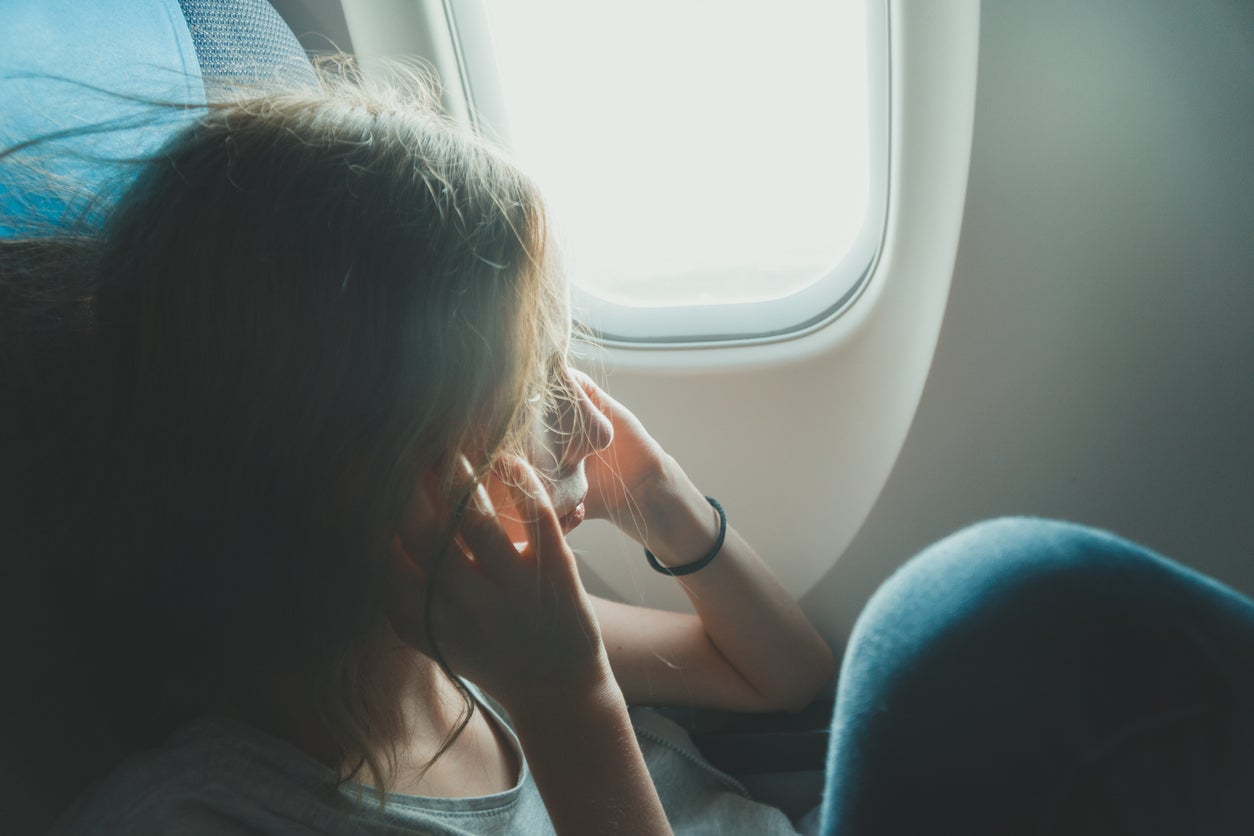Air rage, drunk passengers, wing walkers ‒ and now we have to deal with AirDropped nudes on flights, too?
As a frequent air traveller, I’ll never understand the spectrum of bad plane behaviour. Can’t we all keep it together for the length of a flight?, asks Lucy Thackray


Just when you think you’ve got your head around the many ways fellow passengers can ruin your flight, here comes technology to add another.
It’s no secret that we’re coming out of a two-year period of exceptionally mad inflight behaviour, with data in both the US and UK showing that disruptive passenger incidents spiked as people began flying again following the Covid-19 pandemic lockdowns. Though the numbers have calmed somewhat since 2021, the mind-boggling incidents continue on an almost weekly basis.
“Disruptive passengers”, of course, covers a whole manner of sins. There was the woman who stripped down to her underwear and tried to enter the cockpit twice on a flight from Manchester to Cyprus. The drunk man who pretended to shoot an imaginary gun at other passengers, tried to open both the plane cabin and cockpit doors, and shoved a flight attendant against the wall on a three-and-a-half-hour domestic US journey. The man who leapt onto an airline drinks trolley mid-flight, before stripping off his clothes in the aisle, forcing the plane to divert.
It’s no secret that we’re coming out of a two-year period of exceptionally mad inflight behaviour
It’s not just mile-high chaos, either: in the past year alone we’ve had three cases of people popping open an emergency exit and strolling out onto the plane wing while the aircraft was parked or taxiing in the airport.
Now it seems we have a new offence to add to boozing, stripping and impromptu wing-walking: AirDropped nudes.
On Tuesday a Southwest Airlines pilot told passengers he would be forced to turn the plane around if someone on board did not stop sending nude photographs to them via AirDrop technology. Captured in a viral video, the captain told passengers he would “have to pull back into the gate” if the mystery culprit did not cease sending the unwelcome nudes. “Whatever that AirDrop thing is, quit sending naked pictures, and let’s get yourselves to Cabo,” he told those onboard.
For those who are new to it, Apple’s AirDrop function enables anyone with one of the brand’s smartphones or tablets to send an image or other file to someone within close range ‒ around 30 feet, or nine metres ‒ without having to have their number.
The Bluetooth technology means that unsolicited pictures sent by a stranger can pop up on your phone in close quarters; for example, a plane cabin. AirDrop gives recipients the option to either open or disregard the image, but many who aren’t familiar with it unwittingly click on whatever they’ve been sent, sometimes with horrifying results. The use of it to send explicit photos has been dubbed “cyberflashing”.
Far from being shocked to have one chaotic incident per year on a flight, many of us now traipse onto a flight fully expecting some sort of ruckus in the sky
Tuesday’s case wasn’t the first time AirDrop has disrupted a flight: in June a man was kicked off a Southwest flight after AirDropping an explicit photo ‒ allegedly depicting him receiving oral sex ‒ to other passengers. Meanwhile, an Israeli flight was cancelled in May after more than 150 passengers received an eerie photo of a crashed plane shortly after boarding, AirDropped anonymously to multiple phones.
Sending an unsolicited nude photo is widely acknowledged to be sexual harrassment, and could soon be criminalised in the UK as part of the proposed Online Safety Bill. But, in a more practical sense, pilots already have a million small things to deal with to get their charges from airport to airport. Adding Bluetooth “pranksters” to the growing list of nightmare passengers ‒ especially when the picture in question, as with the plane crash photo, could trigger serious security concerns ‒ is the absolute last thing they need.
It feels like the latest depth in a pit of unnecessary inflight behaviours. Far from being shocked to have one chaotic incident per year on a flight, many of us now traipse onto the aircraft fully expecting some sort of ruckus in the sky. Before I caught a delayed easyJet flight back from Mykonos in May, three lads downed pints and blasted music on a speaker in the airport, badgering staff and other passengers to “have fun with them”. Two of them were eventually denied boarding, but not before a lengthy back and forth with staff that delayed us another hour and a half.
Where we might once have looked around, alert and alarmed, I spy fellow frequent flyers doing the same as me: putting on our headphones, shrinking into our seats and patiently waiting for the madness to end.
It’s getting to the point where you couldn’t pay me enough to be a flight attendant
Obviously there are mental health issues involved in some of these incidents, with little way for airlines to detect any vulnerable passengers before they arrive for their flight. But much of it appears to be old fashioned bad behaviour, amped up by nerves, booze or frustrations with flight delays. It’s getting to the point where you couldn’t pay me enough to be a flight attendant ‒ they often feel less like safety overseers and waiting staff, and more like zookeepers.
Regarding the new trend for inflight cyberflashing and terrorising fellow passengers with threatening photos, I’m not sure what the answer is. Is there a way cabin crew can ensure all devices are switched off or in flight mode right after boarding? If there were, I’m sure it’d be in place by now. (On an individual level, it’s possible to set your Apple device’s AirDrop settings to “Contacts Only” or ”Receiving Off” to prevent any unwanted file appearances.)
Do we all need to pass regular online courses in good passenger behaviour before being allowed to fly, or be breathalysed and asked to walk a straight line before boarding? Whatever the attached hassle for non-disruptive passengers, I’d do it without complaint. Just get me on a flight where everyone is able to hold it together from boarding to arrivals.
Join our commenting forum
Join thought-provoking conversations, follow other Independent readers and see their replies
Comments